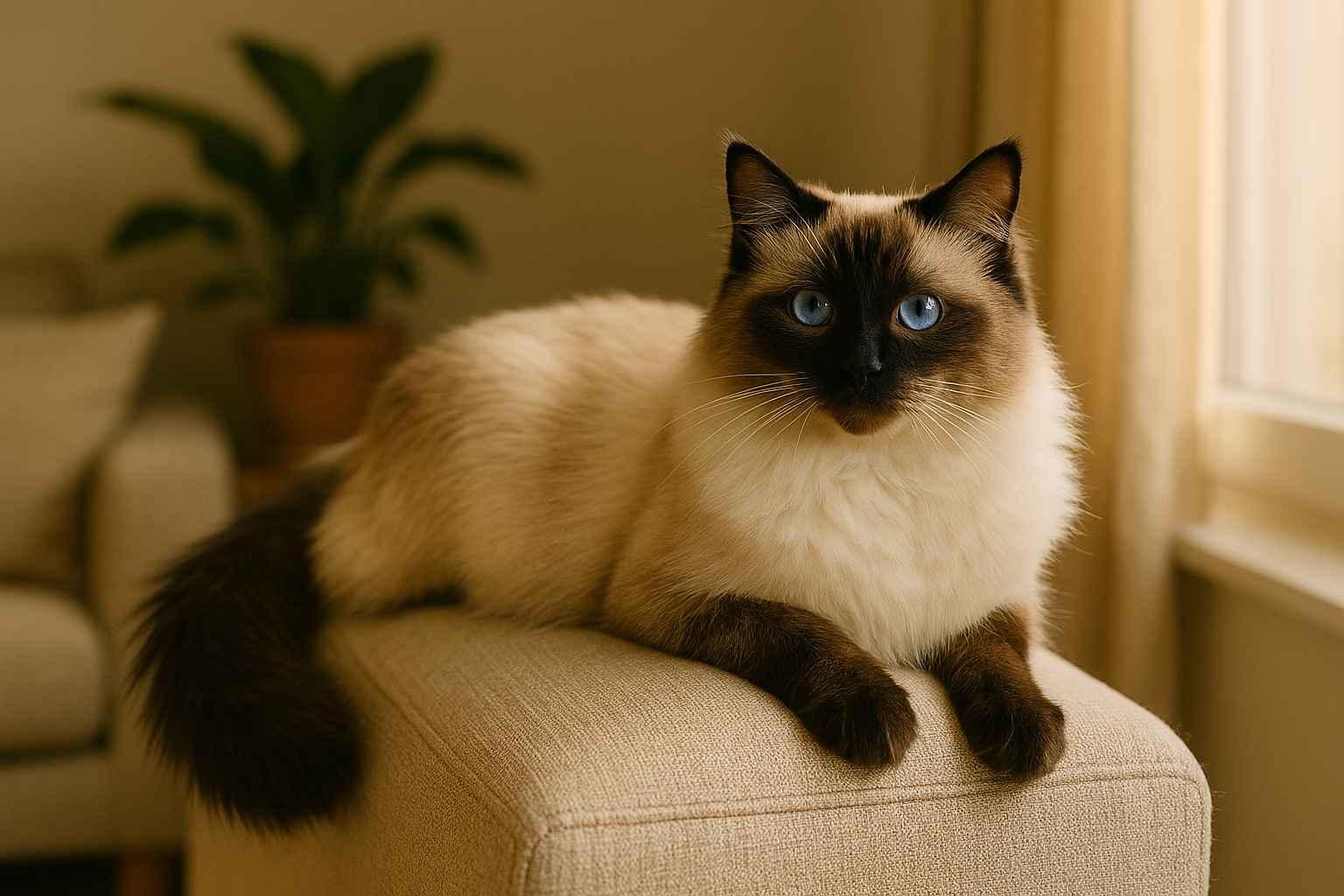Ragdoll cats are famous for their striking blue eyes, semi-long fur, and docile temperament. True to their name, they often go limp like a ragdoll when picked up, a testament to their trusting and relaxed nature. These cats are the perfect blend of beauty, gentleness, and companionship.
If you’re thinking of welcoming a Ragdoll into your life — or already have — this guide will walk you through how to care for, bond with, and raise a happy, healthy Ragdoll cat.
What Makes Ragdolls Unique?
Ragdolls are known for:
- Their calm and easygoing nature
- Strong affection for their humans
- Floppy, relaxed posture when held
- Gentle behavior with children and other pets
- Stunning blue eyes and plush coat
They thrive in loving homes where they can be close to their humans and enjoy a calm, structured environment.
Appearance and Coat
Ragdolls are large, muscular cats with semi-long fur and a soft, silky texture. They come in various color patterns:
- Colorpoint – darker face, ears, paws, and tail
- Mitted – white feet and chin with colorpoint pattern
- Bicolor – white inverted “V” on the face, white belly and legs
- Lynx – tabby striping over any of the above
Their coats require care, but they are surprisingly low in matting compared to other long-haired breeds.
Grooming and Coat Care
While Ragdolls don’t have an undercoat that tangles easily, regular grooming helps keep their fur soft and clean.
Grooming tips:
- Brush 2–3 times per week with a wide-toothed comb and slicker brush
- Focus on belly, chest, and behind the ears
- Bathe occasionally, only if dirty (they’re usually clean)
- Wipe eyes gently if discharge appears
- Trim nails every 2–3 weeks
- Brush teeth regularly for oral health
Start grooming early so they grow to enjoy the routine — most Ragdolls do!
Feeding and Nutrition
Due to their laid-back nature, Ragdolls can be prone to weight gain if overfed.
Feeding recommendations:
- High-protein, low-carb food for controlled growth and weight
- Measure meals 2–3 times a day — don’t free-feed
- Keep fresh water available at all times
- Offer occasional treats (healthy ones!)
- Use puzzle feeders for mental stimulation
Kittens need more frequent meals, while adults should be fed consistently to avoid obesity.
Personality and Behavior
Ragdolls are often described as “puppy-like” due to their affectionate and social behavior.
They typically:
- Follow their humans from room to room
- Enjoy lap time and cuddles
- Are tolerant of handling and being held
- Rarely use claws during play
- Are calm around guests and children
They aren’t overly demanding but do need attention and connection to be truly happy.
Playtime and Enrichment
Ragdolls aren’t hyperactive, but they still need playtime and stimulation to stay healthy.
Enrichment ideas:
- Feather wands and string toys
- Soft balls and crinkle toys
- Puzzle feeders and treat balls
- Climbing trees or multi-level cat furniture
- Access to sunny windows or bird feeders
Play for at least 15–30 minutes daily, even if it’s calm and slow-paced.
Ideal Living Environment
Ragdolls do best indoors, in calm, safe spaces:
- Quiet homes with predictable routines
- Soft surfaces and cozy spots for lounging
- Cat trees and scratching posts
- Safe balconies or enclosed patios (optional)
Because of their trusting nature, they should not be allowed to roam freely outdoors — they’re too friendly and may not sense danger.
Social Needs and Companionship
Ragdolls thrive on affection. They are great with:
- Children (gentle and patient)
- Other cats (especially fellow Ragdolls)
- Dogs (if introduced properly)
If you’re away often, consider having two cats or a companion pet — they don’t like being left alone for long periods.
Health Considerations
Ragdolls are generally healthy but may be prone to:
- Hypertrophic Cardiomyopathy (HCM) – a common feline heart condition
- Bladder stones or urinary tract issues
- Hairballs (due to grooming habits)
- Obesity (due to inactivity)
Annual vet checkups, weight monitoring, and a quality diet help prevent most concerns. Always choose breeders who test for HCM if buying a kitten.
Final Thoughts: Is the Ragdoll Right for You?
You’ll love the Ragdoll if you:
- Want a calm, gentle, and affectionate cat
- Prefer a cat that enjoys cuddles and being held
- Have a peaceful home without a lot of chaos
- Can dedicate time for grooming and play
- Value strong bonds and quiet companionship
A Ragdoll is more than just a beautiful cat — they are devoted companions that will fill your home with love, warmth, and peaceful energy.

